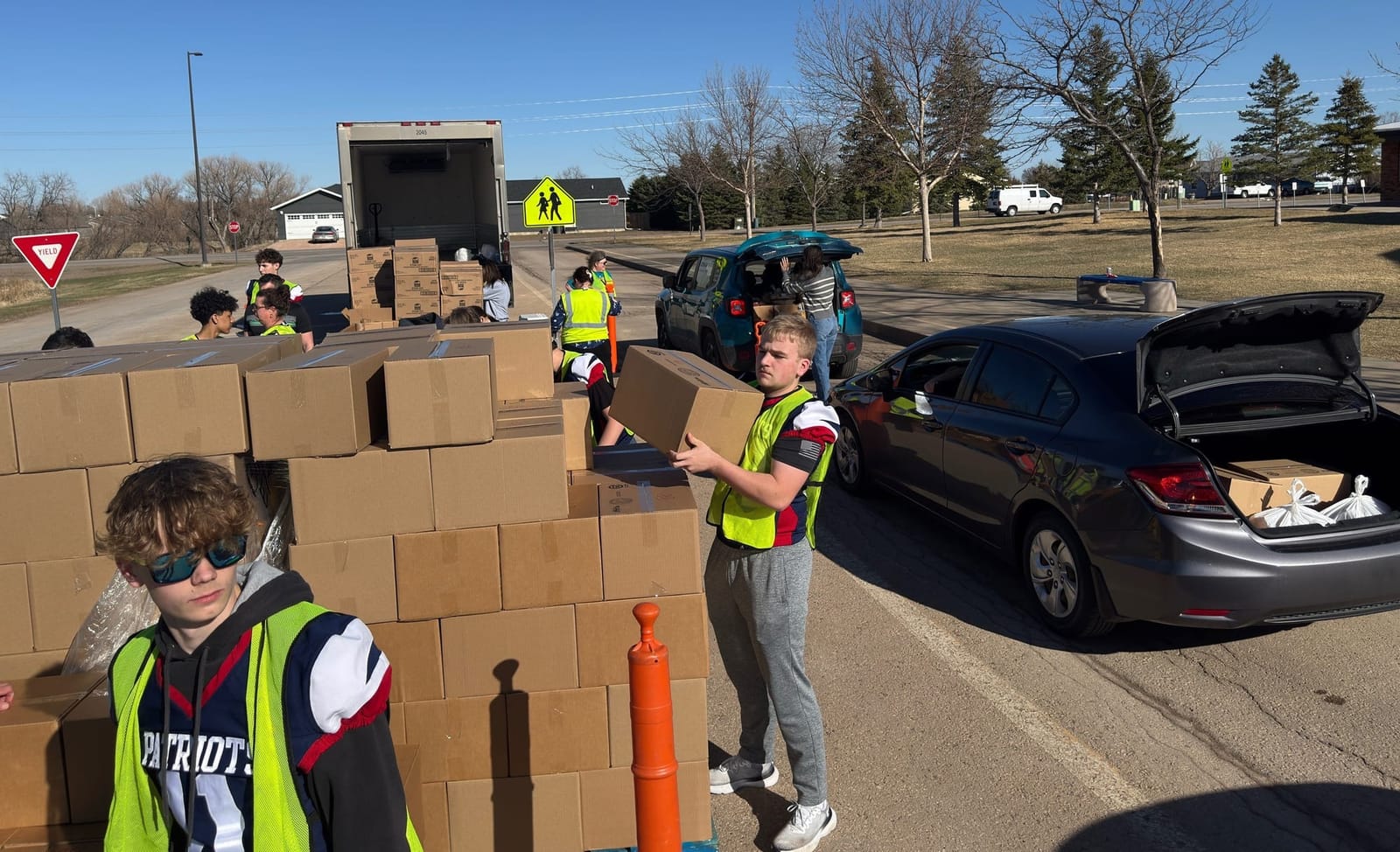The spending and taxation bill signed in July by President Donald Trump and the spending cuts made by the Department of Government Efficiency (DOGE) and other federal departments are having a wide variety of impacts on South Dakota.
The nearly 900-page bill was signed into law on Friday, July 4, and includes about $4.5 trillion in tax cuts and supports other Trump administration priorities, such as boosting defense spending and immigration enforcement. The measure also reduces Medicaid and food aid for the poor and will add $3.3 trillion to the national deficit over the next decade, according to The Associated Press.
Over the past six months, South Dakota News Watch has tracked how the federal cuts will affect the Rushmore State. While timely and concrete information has at times been difficult to come by, News Watch has sought to highlight the impacts that are of greatest interest to the state.
Each area of funding is covered in its own section that can be expanded to show the details by clicking on the title or the down arrow. This article was last updated on July 8, 2025. Send additional cuts, corrections or questions to info@sdnewswatch.org.
SDSU professor: Courts have slowed down process
Lisa Hager, associate professor of political science at South Dakota State University in Brookings, said the Trump administration’s approach to reducing government spending has been atypical.
Federal judges have issued nationwide injunctions that have stopped or slowed actions by Trump, agency heads and Elon Musk, who served as a special government employee while leading DOGE.
“What's before the courts is kind of this clawing back of money, which is typically not what we have happen,” Hager said. “And so the courts are going to have to figure out whether they think that's acceptable or not. That's not common by any means.”
A poll in May sponsored by South Dakota News Watch and the Chiesman Center for Democracy at the University of South Dakota found that 73% of Republican voters in the state approved of Trump's leadership.
However, the same survey of all registered voters in the state found that just 49% approve of the DOGE efforts.
“I don't think anybody just wants wasteful government spending, but maybe we need to have a more thorough, thoughtful process in what we're doing rather than just having somebody go in and start hacking away at things,” Hager said about DOGE.
Regardless of opinion, the funding cuts and staff reductions have hit numerous agencies and departments, including in South Dakota, she said.
By Emily DeCock
Job Corps program at risk
The Boxelder Job Corps Civilian Conservation Center in Nemo, S.D., is facing potential closure due to federal budget cuts that close 124 of the job training and education centers for low-income youth and young adult across the country. The Department of Labor has called for a halt to a majority of those programs, and federal budget documents show the remaining centers are also targeted for closure.
The Trump administration has said it wants to cut the program as part of a larger effort to streamline government spending, and due to a report that showed low graduation and job-placement rates at some centers.
In June, a federal judge paused the closures, saying only Congress can cut the spending. Meanwhile, officials with Job Corps are worried that low-income youths in South Dakota and across the country could lose an opportunity to get a high school diploma and job skills needed to help pull them out of poverty.
By Bart Pfankuch
Humanities projects
Trump's taxation and spending bill appropriated $40 million to the National Endowment for the Humanities (NEH) to build a new sculpture installation called the National Garden of American Heroes near the Mount Rushmore monument.
Trump first mentioned the project in 2020 while on a visit to the Black Hills.
A story reported by News Watch in May outlined how humanities projects funded through the NEH in South Dakota and throughout the region that have been affected by cuts.
The South Dakota Humanities Council (SDHC) receives about $950,000 annually through the NEH, around 73% of its annual budget. All of it was cancelled due to DOGE cuts in April, said executive director Christina Oey.
Around $600,000 had already been appropriated by Congress. The SDHC is currently engaged in a lawsuit against the NEH from that funding. The SDHC also cut two of seven positions, and moved another to part-time.
The Norwegian American Historical Association (NAHA) received $300,000 from the NEH for a project to "preserve, digitize and share materials" from Norwegian-Americans during World War II. Those funds were cancelled by DOGE after being appropriated.
Amy Boxrud, executive director of NAHA, said two months later, they are still "scrambling" to find other funding sources for the project.
The board has agreed to keep the project going short term while it looks for alternative funding. So far, they've received donations and are applying for state grants.
By Emily DeCock
Funds for cancer screening for low-income uncertain
A national program that helps low-income women get mammograms and Pap smears free of charge was late to administering federal funds to South Dakota and other states, which prompted some hospitals to stop taking appointments for breast and cervical cancer screenings.
South Dakota's program is called All Women Count! (AWC). The South Dakota Department of Health (DOH), distributes the funds to AWC partners throughout the state.
When no notice of award came through for the third quarter, which started July 1, officials within cancer prevention started to worry.
The DOH notified AWC partners on June 23 that agreements would be terminated effective June 30, as previous funding for participating site agreements was due to lapse, said Tia Kafka, marketing and outreach director at the South Dakota DOH.
The state received a notice of award on June 30, one day before the third fiscal quarter started on July 1.
"Because we received the NOA, there was thankfully no gap in service provision," Kafka said.
The AWC typically receives around $1 million every year from CDC.
From 2018 to 2023, 6,471 women in South Dakota received a screening or diagnostic procedure funded through the NBCCEDP.
Each year in South Dakota, breast cancer is the most frequently diagnosed cancer and is the fourth leading cause of cancer deaths among women. 613 women are diagnosed with breast cancer and an estimated 115 women die from breast cancer per year.
An estimated 27 women are diagnosed with cervical cancer every year in South Dakota, and an estimated nine women die from cervical cancer.
By Emily DeCock
Join other South Dakotans and support statewide storytelling.
The Associated Press contributed to this story, which was produced by South Dakota News Watch, an independent, nonprofit organization. Read more stories and donate at sdnewswatch.org and sign up for an email to get stories when they're published. Contact Bart Pfankuch at bart.pfankuch@sdnewswatch.org








